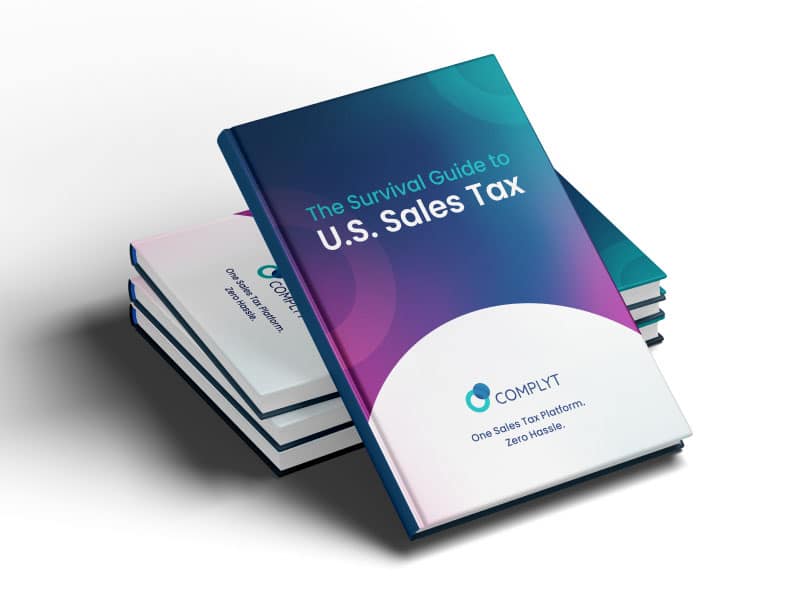What is the sales tax rate in Ohio?
The current state sales tax rate in Ohio stands at 5.75%. However, local jurisdictions can levy additional sales tax, resulting in a combined sales tax rate ranging from 5.75% to 8% depending on the location of the business or the purchaser. So to stay on the safe side, always verify the current rates with the Ohio Department of Taxation.
When should your business collect Sales Tax in Ohio?
A business must collect Ohio sales tax when it has a sales tax nexus in Ohio. Now you can just picture Calvin asking his parents, “Dad, what’s a nexus?” And maybe you’re wondering the same.
Sales tax nexus is a term that refers to the presence or connection of a business to a state that obligates the business to comply with the state’s sales tax laws. These connections can include a physical connection or an economic connection.
Ohio Physical Sales Tax Nexus
Sales Tax Physical Nexus refers to a tangible presence or activities in Ohio.
Sales Tax Physical Nexus checklist for Ohio
- Owning or leasing property such as an office, warehouse, or place of business
- Employing salespeople, agents, or representatives in Ohio
- Storing inventory in Ohio
- Delivering goods with company-owned vehicles
Ohio Economic Nexus: Revenue, Thresholds and Transactions
In Ohio Economic Nexus is defined as making at least $100,000 in gross receipts or 200 transactions to Ohio customers in the current or preceding calendar year. If your business reaches these thresholds, you are required to register for a sales tax permit and collect sales tax from your Ohio customers.
The month in which you established an economic nexus in Ohio is the same month that you need to register and start collecting tax.
Which services are taxable in Ohio?
In Ohio, most services are not subject to sales tax. However, some specific services are taxable. These include but are not limited to:
- Landscaping and lawn care service
- Private investigation and security service
- Information services
- Employment services
- Exterminating service
- Building maintenance and cleaning services
Ohio Sales Tax on Products: How to Calculate What Your Business Should be Charging
Calculating sales tax in Ohio involves adding the tax rate by the sales price of the taxable product. The combined sales tax rate varies by location. For instance, if you sell a product for $100 in a location with a 7.5% sales tax rate, you would charge $107.50 ($100 for the item, plus $7.50 for Ohio sales tax).
How much is the Ohio clothing tax?
Clothing sales are generally deemed taxable in Ohio, at the state rate of 5.75% plus additional local taxes. The only narrow exemption that exists is for the sale of In the state of protective clothing used in regulated manufacturing areas.
Fortunately, the Ohio sales tax holiday held around the back-to-school season helps retailers offer an exception on the majority of clothing sales to their customers.
Ohio Online Sales Tax: Are SaaS and Digital Services Taxable?
Unlike many other states, the sale of digital products and Software as a Service (SaaS) are generally considered taxable in Ohio.
SaaS Sales Tax Ohio: Does my Business Need to Charge Sales Tax for SaaS in Ohio?
Yes, SaaS is taxable in Ohio, but only when sold to businesses, not individuals.
Determining the specific application of Ohio SaaS sales tax rules to your business, staying updated on any changes in tax regulations, and staying compliant in the state of Ohio is vital for SaaS companies.
How can a business get a sales tax permit in Ohio?
You can obtain a sales tax permit in Ohio by applying online through the Ohio Business Gateway or by completing the paper form (ST ST1000) and mailing it to the Ohio Department of Taxation.
Collecting Sales Tax in Ohio as a Business
When collecting sales tax in Ohio, it’s important to apply the correct rate based on the location of the buyer (destination-based sales tax). The collected tax must be remitted to the state at your assigned filing frequency.
Ohio Tax Return Due Dates Explained
In Ohio, sales tax returns are generally due on the 23rd of the month following the reporting period. However, the exact due dates can vary depending on the filing frequency (monthly, quarterly, or annually), which is determined by the volume of your sales.
What is the required frequency for sales tax returns in Ohio?
The filing frequency in Ohio is determined by the volume of sales. Monthly filers have collected over $1,200 in sales tax, quarterly filers have collected between $200 to $1,200, and yearly filers have collected less than $200.

